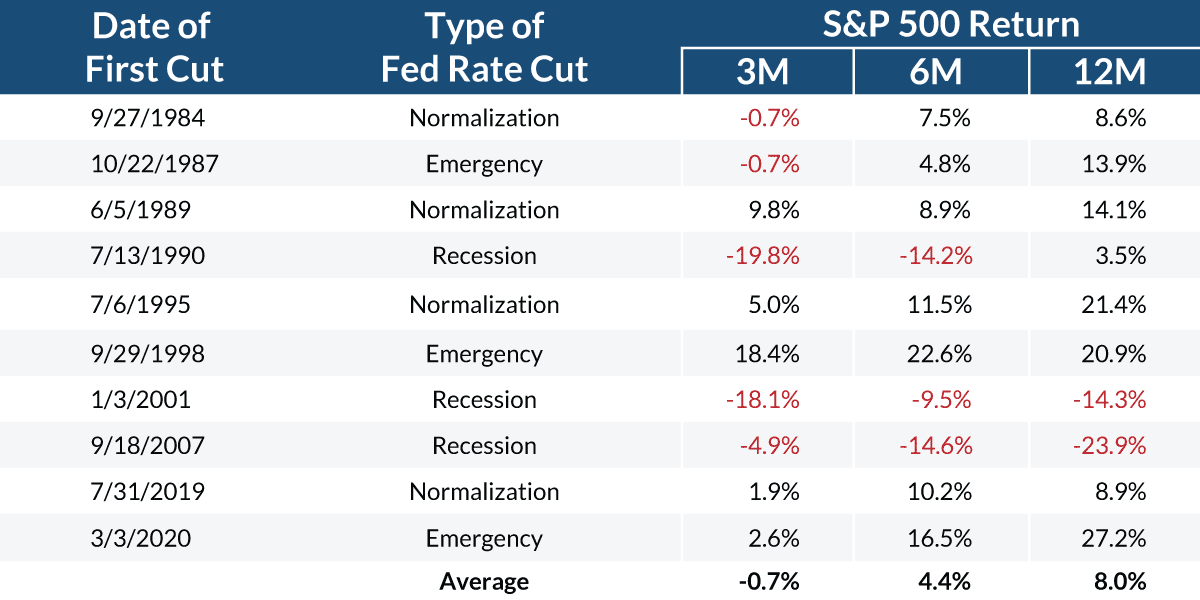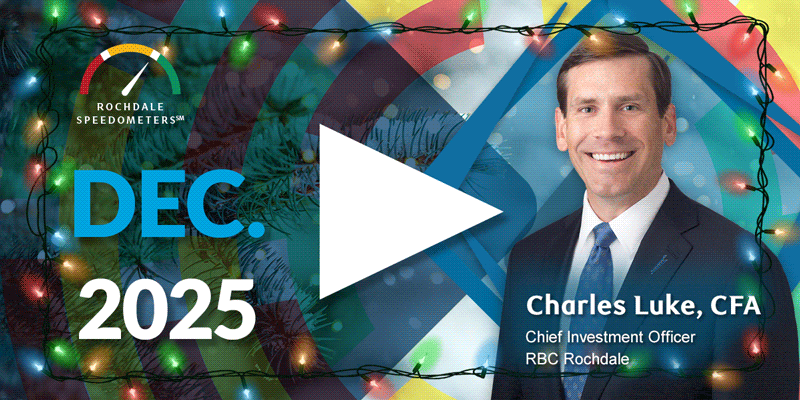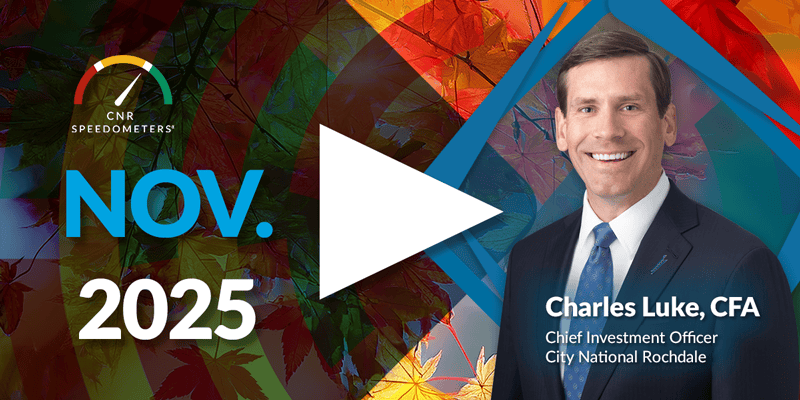-
Market Perspectives
Into the Second Leg
April 2024
- Filename
- Market Perspectives APRIL 2024.pdf
- Format
- application/pdf
TRANSCRIPT
The first quarter has handed the baton off to the second quarter; anyone with allergies can tell you that spring is in full bloom. So, let’s check in on the markets and our outlook.
The first quarter ran a strong first leg with many equity indices posting returns well into positive territory. Let’s review the report card: U.S. Large cap stocks continue to perform relatively well. The S&P 500 finished the quarter up 10.56%. [S&P 500] Mid cap stocks weren’t far behind at 9.95%. [Russell 2000] Small cap and [Dow Jones Dividend Select Index] dividend stocks were positive as well, but not as much. The Russell 2000 and the Dow Jones Dividend Select Index were up 5% and 6.1%, respectively. [S&P 500] Growth outperformed value, [Morgan Stanley Capital International (MSCI)] Japan outperformed [MSCI] Europe, and interestingly and encouragingly, the broad S&P 500 outperformed the NASDAQ in the first quarter, indicating it wasn’t just the Magnificent Seven driving returns for the first part of the year. Further, the All-Country World Index posted an 8.1% return. So, in all, it was a very good quarter for equities across many areas.
Bonds were a different story. Both the Bloomberg U.S. Aggregate and the Bloomberg Muni bond Blend Indexes were down a smidge, less than 1%. Generally, [Bloomberg U.S. Aggregate] U.S. Bonds outperformed [Bloomberg Global Aggregate] global, U.S. Treasuries outperformed corporates, and [Bloomberg U.S. Corporate Investment Grade] High Yield bonds fared better than [U.S. Corporate Investment Grade] investment grade. The prospect of interest rates staying higher for longer, or maybe we should start saying “even longer,” has weighed on bond returns.
Shifting our focus to the new quarter, so far in April, the 10-year Treasury yield has surged to a high for the year, hitting 4.5% as strong economic data as well as cautious comments from Fed officials raised concerns that rate cuts could be delayed into the latter half of the year.
Further, recent inflation data CPI and Core CPI came in higher than expected, possibly reshaping expectations. The window to invest in bonds near current yield levels might be open a little longer than originally thought.
For stocks, earnings season is just around the corner, and the consensus first quarter earnings per share growth estimate for the S&P 500 has declined, but analysts still expect a third straight quarter of growth.
Negative pre-announcements are somewhat above historic trends. Given the recent economic strength, the downside earnings risk does not appear significant. But given the appreciation in stocks over the past six months, volatility is likely to increase as bullish and bearish narratives compete.
Earnings will be key to supporting the continuing rally in stock markets that have seen valuations become more stretched during the recent run.
City National Rochdale has increased the bottom end of our 2024 corporate profit growth range and now expects earnings growth of 9% to 12% this year.
S&P 500 Performance
After First Fed Rate Cut

Emergency Cuts = Black Monday (1987), Russian Ruble/LTCM Crisis (1998), COVID (2020)
Data current as of April, 2024
Sources: FactSet, St. Louis Fed.
Information is subject to change and is not a guarantee of future results.
Chart 1: 3:11 — It appears the main risk for equities right now seems to be hawkish repricing around Fed expectations.
While many are focused on when the Fed will cut, it is important to note that historically, it matters why the Fed cuts. When the Fed cuts normalized rates rather than for recessionary reasons, the market has responded relatively more positively three, six, and 12 months after the first rate cut.
As many of you likely saw in our recent CNR Speedometers® video, our forward-looking indicators continue to improve, with recent positive changes to our outlook in Monetary Policy, the U.S. Economic Outlook, Housing & Mortgages, Leading Indexes, Corporate Profit Growth, and Credit Demand & Availability.
To close out, we are expecting modest returns across asset classes in 2024. We remain focused on high-quality stocks and bonds with an emphasis on the U.S. For clients seeking additional capital appreciation, mid and small cap equities appear increasingly attractive.
Keep an eye on economic data releases, inflation readings, and the potential for shifts in the Fed’s messaging and path.
Important Information
The views expressed represent the opinions of City National Rochdale, LLC (CNR) which are subject to change and are not intended as a forecast or guarantee of future results. Stated information is provided for informational purposes only, and should not be perceived as personalized investment, financial, legal or tax advice or a recommendation for any security. It is derived from proprietary and non-proprietary sources which have not been independently verified for accuracy or completeness.
While CNR believes the information to be accurate and reliable, we do not claim or have responsibility for its completeness, accuracy, or reliability. Statements of future expectations, estimates, projections, and other forward-looking statements are based on available information and management's view as of the time of these statements. Accordingly, such statements are inherently speculative as they are based on assumptions which may involve known and unknown risks and uncertainties. Actual results, performance or events may differ materially from those expressed or implied in such statements.
Past performance or performance is no guarantee of future results.
All investing is subject to risk, including the possible loss of the money you invest. As with any investment strategy, there is no guarantee that investment objectives will be met and investors may lose money. Diversification does not ensure a profit or protect against a loss in a declining market.
City National Rochdale, LLC, is an SEC-registered investment adviser and wholly owned subsidiary of City National Bank. Registration as an investment adviser does not imply any level of skill or expertise. City National Bank and City National Rochdale are subsidiaries of Royal Bank of Canada.
Index Definitions
The Standard & Poor’s 500 Index is a market capitalization-weighted index of 500 common stocks chosen for market size, liquidity, and industry group representation to represent US equity performance.
The Russell 2000® Index is a market capitalization-weighted index measuring the performance of the small-cap segment of the US equity universe and includes the smallest 2,000 companies in the Russell 3000® Index.
Nasdaq 100 Index is an index composed of the 100 largest, most actively traded U.S. companies listed on the Nasdaq stock exchange.
The Dow Jones U.S. Select Dividend Index aims to represent the U.S.'s leading stocks by dividend yield.
MSCI All Country World Index (ACWI): The MSCI All Country World Index (ACWI) is a stock index designed to track broad global equity-market performance.
The Bloomberg US Municipal Bond Index measures the performance of investment grade, US dollar-denominated, long-term tax-exempt bonds.
The Bloomberg US Aggregate Bond Index measures the performance of investment grade, US dollar-denominated, fixed-rate taxable bonds.
Large-cap (sometimes called "big cap") refers to a company with a market capitalization value of more than $10 billion. Large cap is a shortened version of the term "large market capitalization."
Mid-cap stocks are defined as having a market capitalization between $2 and $10 billion USD.
Small-cap stocks are defined as having a market capitalization between $300 million and $2 billion USD.
A dividend is the distribution of a company's earnings to its shareholders and is determined by the company's board of directors. Dividends are often distributed quarterly and may be paid out as cash or in the form of reinvestment in additional stock.
Investment Grade Municipal Bonds: Investment-grade municipal bonds are debt securities, issued by state and local governments carrying the lowest credit risk that a bond issuer may default. Investment Grade Municipal Bonds: Bloomberg Municipal Bond Inter-Short 1-10 Year Total Return Index.
Investment Grade Corporate Bonds: Investment grade corporate bonds are low-risk bonds. Because they are bonds, they are not tied to equity. Instead, they are like debt notes issued by a corporation. Investment Grade Corporate Bonds: Bloomberg Intermediate Corporate Bond Index.
Stay Informed.
Get our Insights delivered straight to your inbox.
Check out previous perspectives:
Put our insights to work for you.
If you have a client with more than $1 million in investable assets and want to find out about the benefits of our intelligently personalized portfolio management, speak with an investment consultant near you today.
If you’re a high-net-worth client who's interested in adding an experienced investment manager to your financial team, learn more about working with us here.



